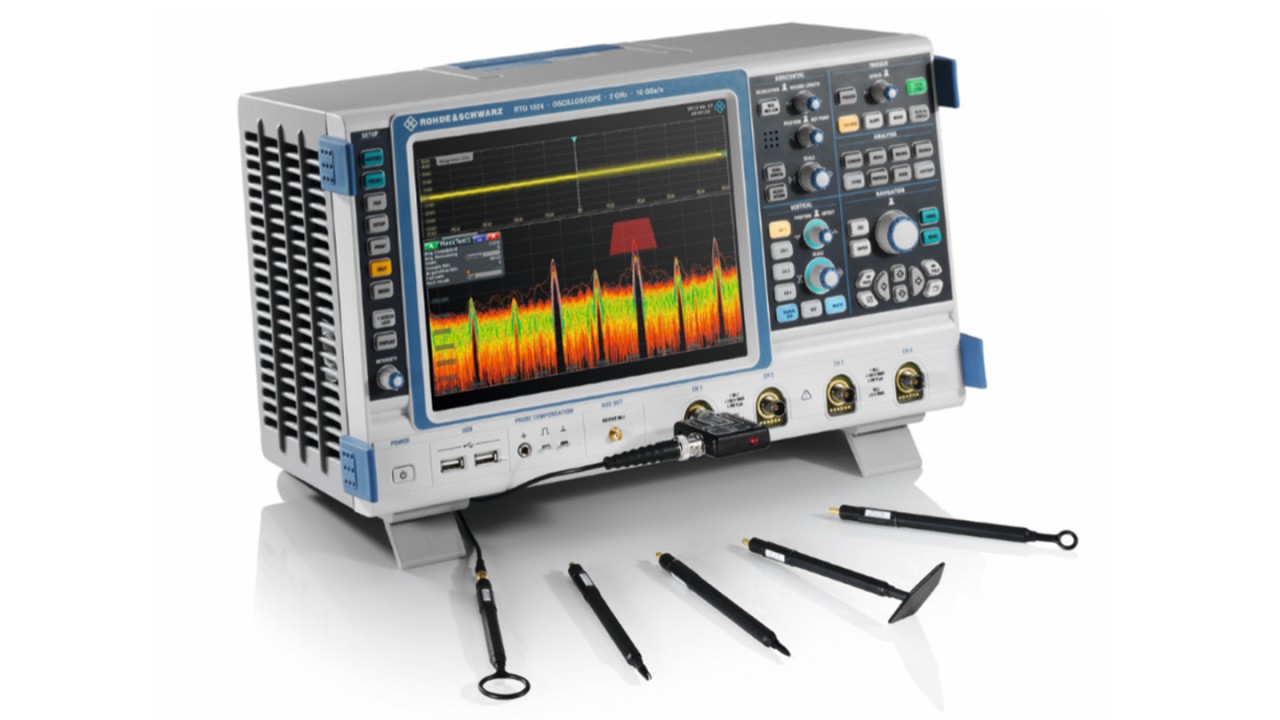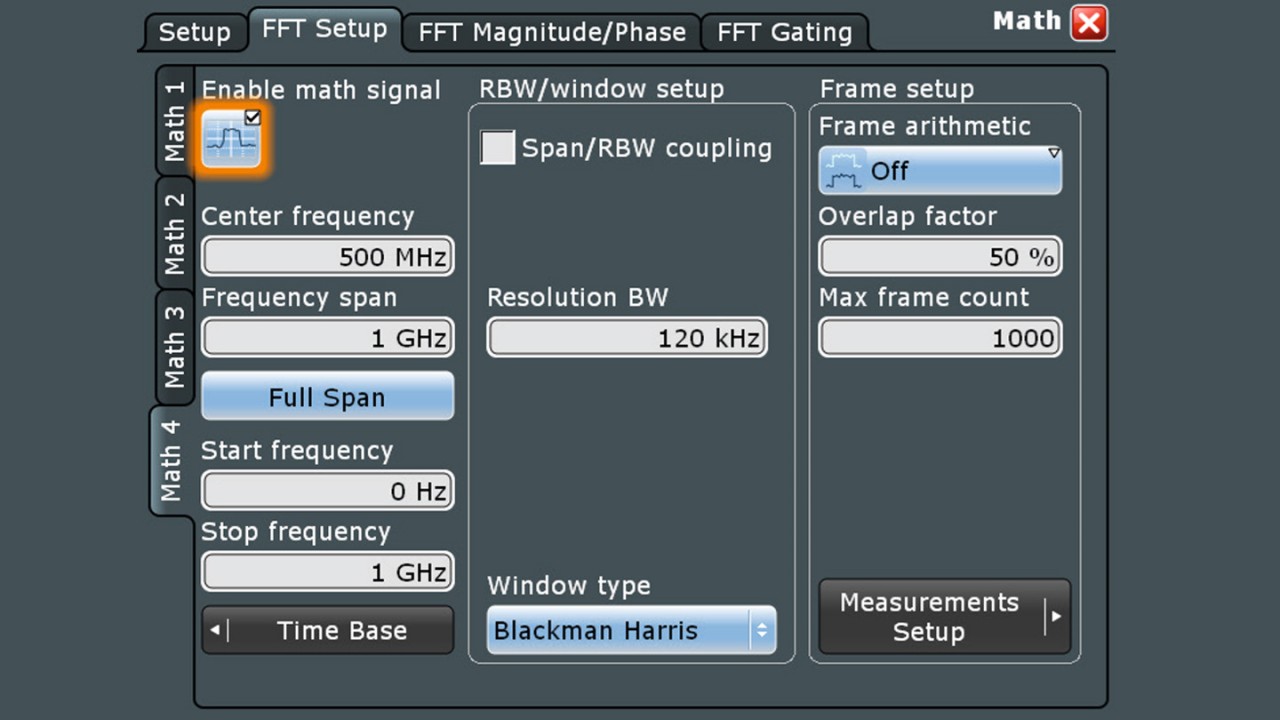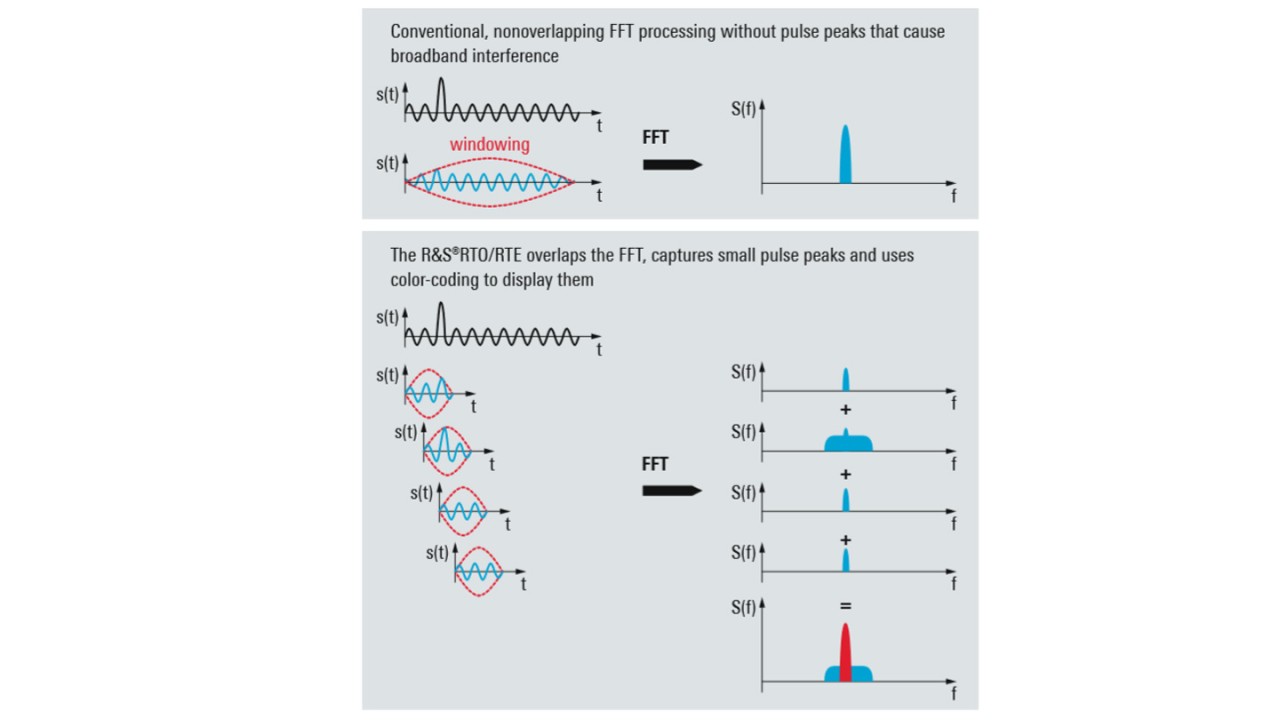Gated FFT for correlated time-frequency analysis
With the gated FFT function, it is possible to restrict the spectrum analysis to a user-defined region of the captured time-domain signal. Excessive spectral emissions can be correlated to dedicated time periods in a signal. Typical applications include the correlation of unwanted emissions to fast switching edges in switched-mode power supplies or to data transfers on bus interfaces. Having identified the problem, the design engineer can easily check the effectiveness of different solutions such as blocking capacitors or reduced rise/fall times by observing the level change of the spectral emission.
Capturing sporadic events with frequency masks
Intermittent or sporadic emissions are the most difficult to debug. They are difficult to capture and not easy to analyze. The R&S®RTO/RTE mask tool allows these events to be captured. Once the mask is violated, the acquisition stops automatically and the user can adjust FFT settings such as resolution bandwidth or gate and use additional tools such as cursors for more detailed analysis.












